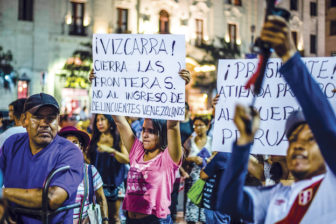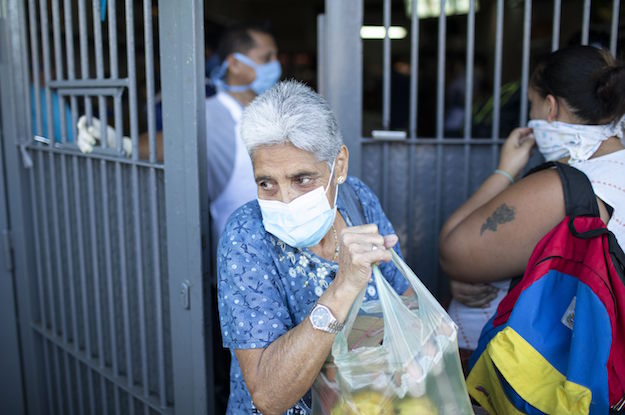The Caracas highrise known as “Torre de David” was supposed to be the biggest financial center in Venezuela. Officially named Torre Cofinanzas—but better known as “David’s Tower,” in honor of its developer, David Brillemburg—60 percent of the building was left unfinished after the company that owned the project went bankrupt in 1994.
For the next 15 years, with no private bidders showing interest, the two 45-story towers and 10-story parking complex were left abandoned, quickly becoming a site for looters and vandals.
But in 2008, 200 families affected by flooding, now known as the building’s founding pioneros (pioneers), occupied the building. Today, around 700 families inhabit the first 27 floors—the last 18 remain abandoned—and have transformed the space into a huge apartment complex.
View a slideshow of the building and its occupants.
Prior to the families (pictured above) moving in, the tower had become a battlefield between drug and housing mafias that controlled the space. Meanwhile, organized political groups had taken over the building and promoted illegal occupations as a way to relieve Venezuela’s housing deficit in the context of the revolutionary process that Venezuelan President Hugo Chávez started in 1999.
Once the squatters took control, they established an organized colony under a socialist structure of distribution of duties and responsibilities, with very strict rules of coexistence.
Today, the occupants have electricity and a homemade pipeline system that takes water to the 20-30 families that share each floor. Having to climb up to 27 sets of stairs every day is the biggest challenge for many residents—especially for children and the elderly—since the elevators were stolen before the 2008 occupation.
For these urban chavista activists, Torre de David is more than a gigantic vertical slum—it is the biggest symbol of capitalism being destroyed from within. For them, the contradiction of “gente sin casas y casas sin gente” (“people without houses, and houses without people”) can no longer exist in revolutionary Venezuela. But the question remains: cand Torre de David can be a long-term solution for these 700-plus families that would otherwise be homeless?
Click here to view an expanded version of the slideshow.
All photos courtesy of the author.
Ramón Campos Iriarte is a Colombian political analyst and journalist. Follow him on Twitter at @iriartephoto.







